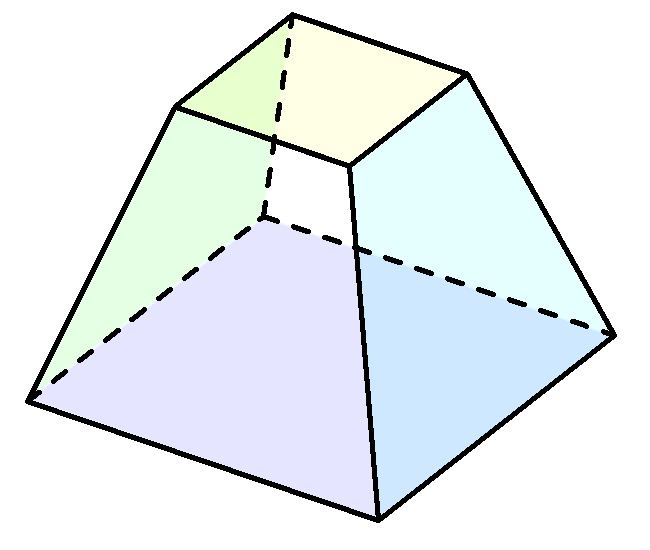Discussion: The Prismoidal Formula

A prismatoid(a.k.a. prismoid) is a solid where all vertices lie on two parallel planes. According to the prismoidal formula, the volume can be calculated by this simple equation \[V = \frac{h}{6} \left({A}_{T} + 4{A}_{M} + {A}_{B}\right )\] where \(h\) denotes the height, and \({A}_{T}\), \({A}_{M}\), \({A}_{B}\) are the top, middle and bottom cross-sectional areas respectively.
However, the prismoidal formula is not a universal formula for computing the volumes of solids. Since the prismodal formula is actually Simpson's rule, the prismatoid formula is precise if the shape is bounded by a polynomial function up to degree three. This can be proven via Lagrange error bounds Error bound of Simpson's Rule.
Check out my other notes at Proof, Disproof, and Derivation
Easy Math Editor
This discussion board is a place to discuss our Daily Challenges and the math and science related to those challenges. Explanations are more than just a solution — they should explain the steps and thinking strategies that you used to obtain the solution. Comments should further the discussion of math and science.
When posting on Brilliant:
*italics*or_italics_**bold**or__bold__paragraph 1
paragraph 2
[example link](https://brilliant.org)> This is a quote# I indented these lines # 4 spaces, and now they show # up as a code block. print "hello world"\(...\)or\[...\]to ensure proper formatting.2 \times 32^{34}a_{i-1}\frac{2}{3}\sqrt{2}\sum_{i=1}^3\sin \theta\boxed{123}Comments
can you determine the parts of prismatoid?
Log in to reply
What do you mean by determine?